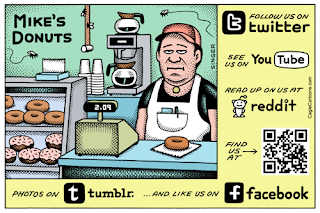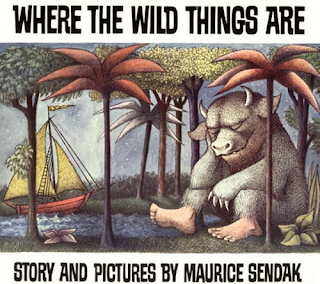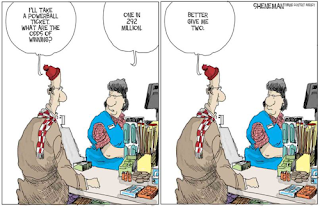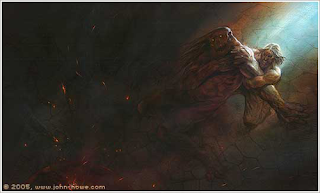Today's mix looks at D. Trump's absence from the Thursday night debate, voter suppression in 22 states, and an accidental shooting in a movie theater.
On Thursday Trump staged an improvised fundraiser for American military veterans instead of attending the debate nearby. Quoting the article,
Many cartoonists are viewing his tactics as childish or cowardly, but not Mike Luckovich.
Cartoonist Steve Sack's view is more surreal.
While politicos are headed down the road to the election, conditions for the voters have changed dramatically: The last large-scale push to curb voting access was more than a century ago, after Reconstruction. Until now. Liberal magazine, The American Prospect, details how
Here are some of the details for the cartoon below.
My apologies for the lack of humor lately--it seems to be in short supply.
-- Marge
On Thursday Trump staged an improvised fundraiser for American military veterans instead of attending the debate nearby. Quoting the article,
Mr. Trump organized the fundraiser to compete with the final candidates’ debate before the Iowa caucuses, in an effort to undercut viewership for the Fox News debate.
Many cartoonists are viewing his tactics as childish or cowardly, but not Mike Luckovich.
***
 |
| Mike Luckovich, The Week |
***
Cartoonist Steve Sack's view is more surreal.
***
 |
| Steve Sack, The Week |
***
While politicos are headed down the road to the election, conditions for the voters have changed dramatically: The last large-scale push to curb voting access was more than a century ago, after Reconstruction. Until now. Liberal magazine, The American Prospect, details how
Voters in 22 states will face tougher rules than in the last midterms. In 15 states, 2014 is slated to be the first major election with new voting restrictions in place.Although American Prospect is not exactly an objective publication, don't expect conservative publications to offer reliable information on this topic. It's too late and maybe impossible to change these restrictions now, but citizens can help the minorities targeted setup their rights to vote in each state.
***
 |
| Tom Toles, The Week |
***
Here are some of the details for the cartoon below.
***
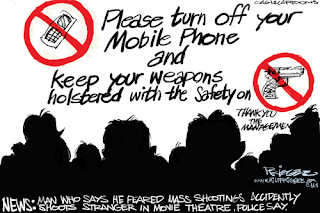 |
| Milt Prigee, The Week |
***
My apologies for the lack of humor lately--it seems to be in short supply.
-- Marge








